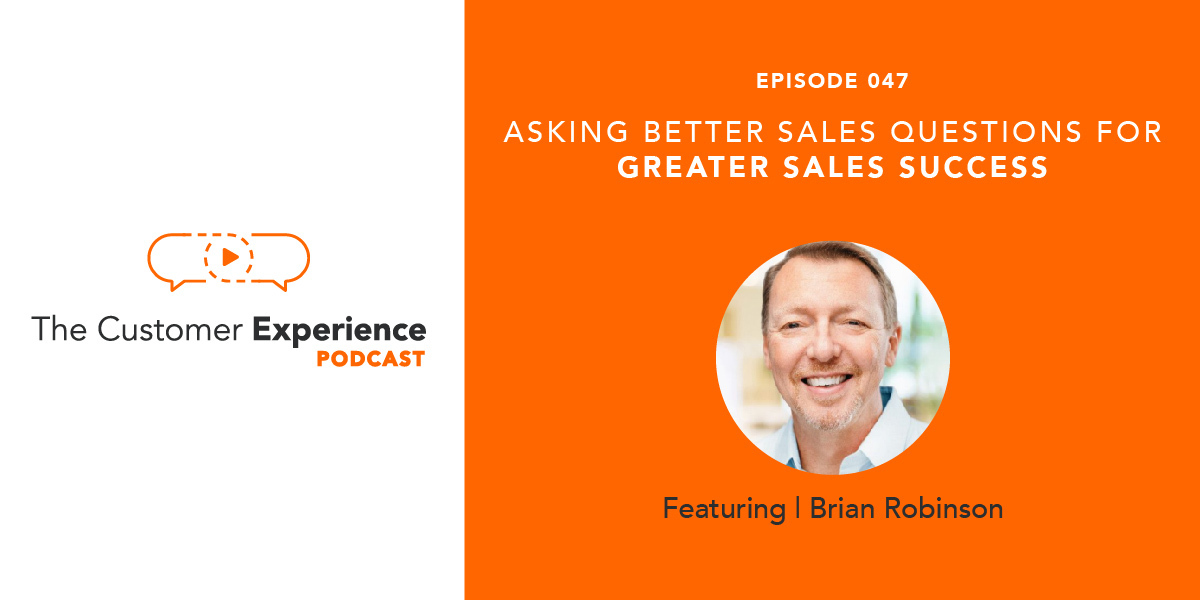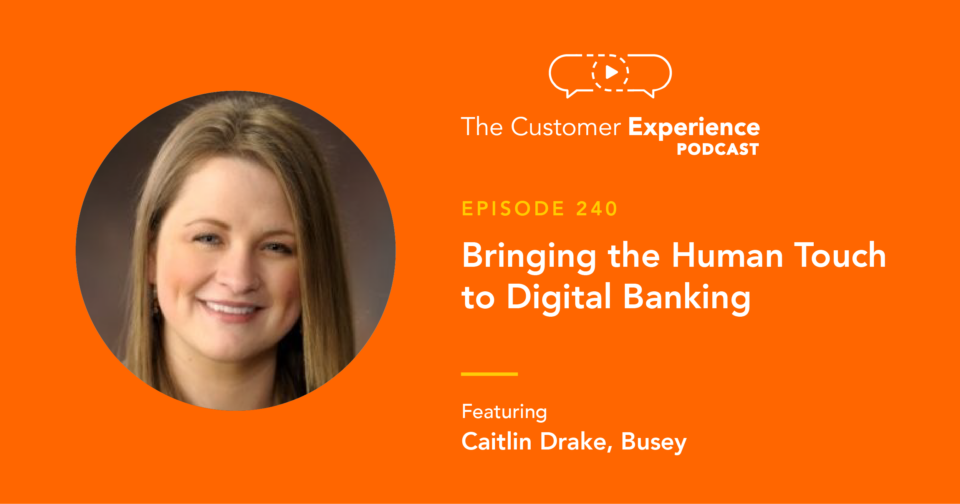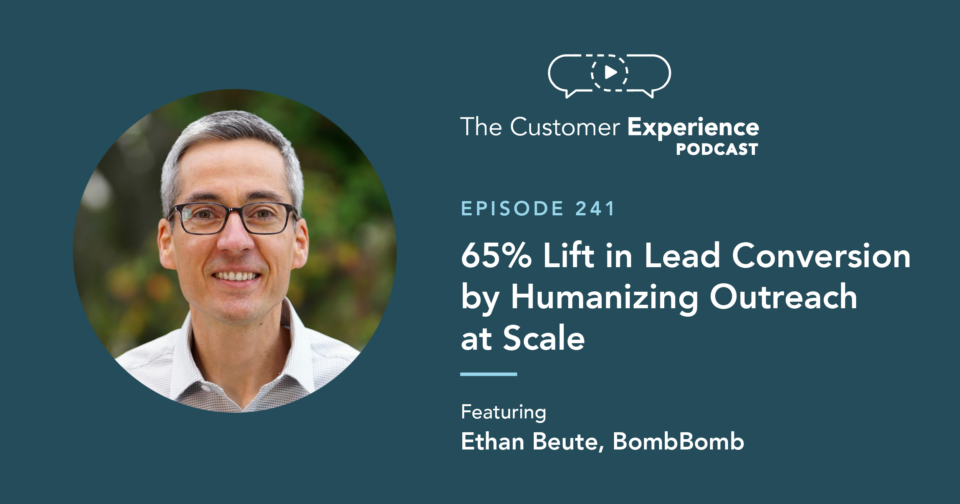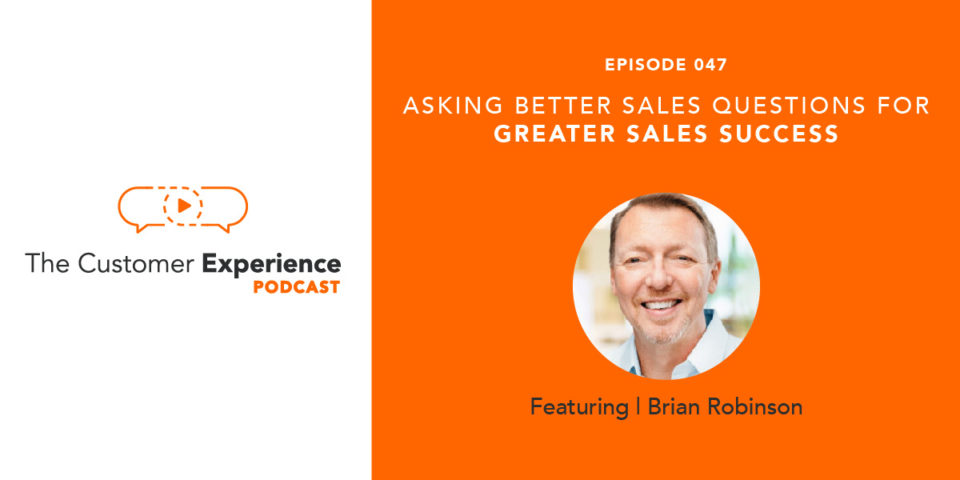
Apple Podcasts | Google Podcasts | Stitcher | Spotify
“What have I done that’s consistent in my sales process?” This is a question many of us should be asking ourselves. And after years of working in sales for companies such as Coca-Cola and Johnson & Johnson, Brian Robinson finally posed the question to himself. In doing so, he developed a selling framework of the five best practices for success – “The Selling Formula” as he calls it.
The strategies it’s built upon don’t cater toward yielding the best business outcomes, but rather they’re tailored to providing the optimal customer experience by asking better sales questions and establishing human connection.
Because, as Brian says, “One question can change everything.”
It’s about transitioning from being self-serving to serving others – building trust and rapport with the individuals you depend on for your business to thrive. The loyalty stemming from this shift in sales focus can lead to results for your company that you never thought possible.
On this episode of The Customer Experience Podcast, we talk about “The Selling Formula” for a great customer experience with Brian – based on his book of the same name – and the sales questions you need to be asking for greater revenue success. We dig deep into the five steps to selling that the formula consists of, and discuss the role of mindset in sales, essential selling phrases and more.
In addition to authoring his Amazon #1 bestseller, Brian is the VP of Strategic Partnerships at Works24, a digital marketing company with an emphasis on in-lobby digital signage, on-hold messages, and overhead music in retail environmnts.
Brian defines customer experience as the number of touches made with a customer, as they are critical to maintaining relationships with them. And he explains why in the clip below…
Brian says these connections should be built strong enough, so that “if anything happens on the downside, they’ll immediately feel comfortable reaching out to you about it.”
So, instead of making annual touches with your customers to keep renewals going every one to three years, make it a point to reach out more frequently and consistently between those renewal cycles.
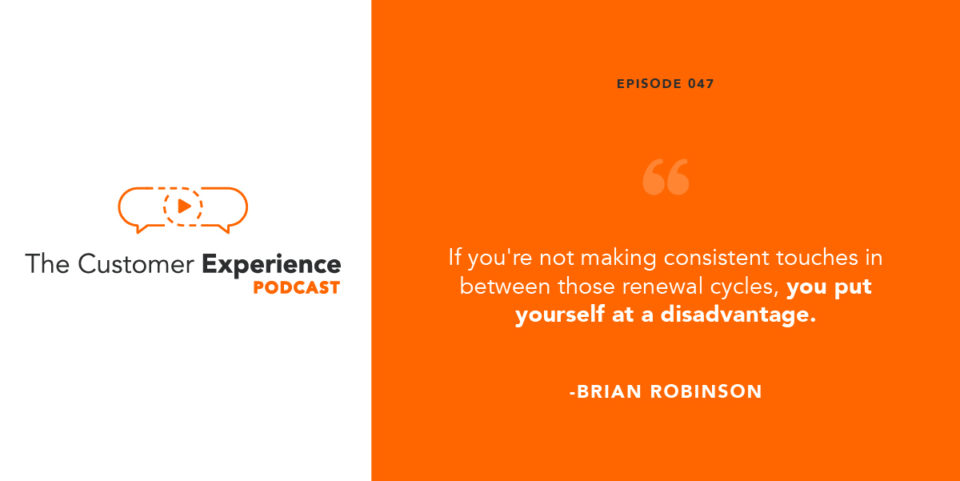
Ideally, you should touch base with your clients and present them with new ideas in relation to your product or service monthly.
This will help keep you top of mind, and customers will be less inclined to turn to competitors. Because, truly, visibility trumps ability.
Read, watch, and listen right here in this post as Brain guides us toward asking better sales questions and producing better customer experiences. Among the things we delve into:
• Adjusting your mindset before entering a sales conversation
• Setting the agenda for customer interactions
• Key selling phrases
• How to ask the right questions
• “The Selling Formula”
• Keeping the sales and marketing feedback loop efficient
Asking Better Sales Questions for Greater Sales Success
Written overviews with embedded video clips from each episode of The Customer Experience Podcast are available here on the blog, but you can also subscribe to hear this episode – and many others – on your preferred podcast player.
Subscribe, listen, and rate/review on Apple Podcasts, Spotify, Google Podcasts, or Stitcher.
You can also listen to the episode on this post. Hear my entire conversation with Brian about “The Selling Formula” right here…
The Role of Mindset in Sales Success
Sales has evolved. It used to solely be about the nuts and bolts of the selling process – with no call to step into the shoes of prospects. The modern mentality has shifted from being strictly business because this all-or-nothing attitude won’t get you very far today.
In order to be successful, you need to adjust your mindset when interacting with customers. Brian explains this more in depth in the video below…
To make these mindset adjustments, Brian recommends the following:
• Start by being grateful for the other person. Be thankful for their interest and the potential business your company may receive.
• Take time to think about what they’re experiencing. You’ve hopefully done research on the business side of things, but dig deeper than that. Ponder what life circumstances they might be in, as well as the internal challenges they may be facing daily.
• Allow yourself to enter a state of serving, instead of acting upon how your conversations with prospects will benefit you. Your mission should not be to close a deal even if you know your service or product isn’t the best one for the customer. Consider how you can be a helpful industry expert. This will help build trust.
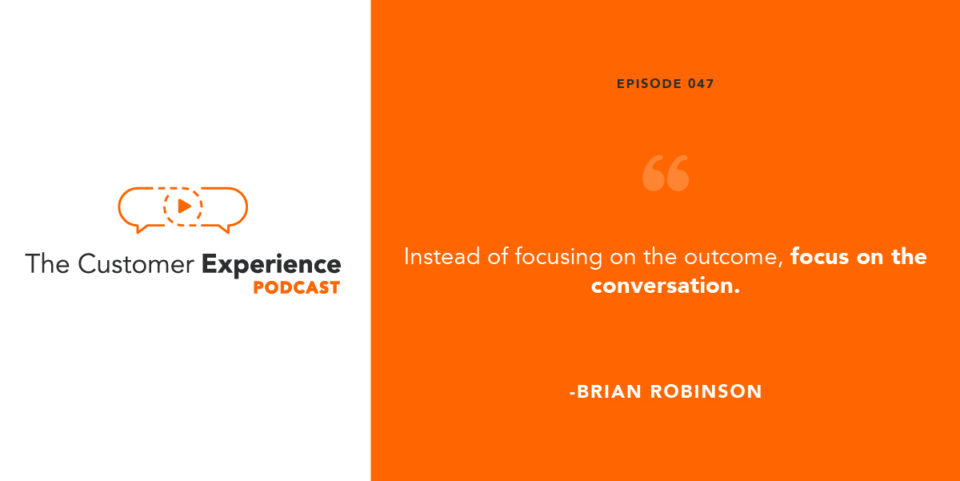
It’s best to reset your mindset before every conversation with a client. It only takes about 60 seconds.
“Instead of focusing on the outcome, focus on the conversation and that person you’re about to speak with,” Brian says. “Let’s see if we can really help.”
It’s about guiding customers in self-discovery and asking “the right questions to uncover their deeper and more emotional-level needs.” By doing this we can really touch clients in meaningful ways and produce greater sales success.
Setting and Sharing Your Meeting Agenda
Through his experiences, Brian found that developing and sharing an agenda for discovery meetings with prospects is a great start to the conversation. He shares an example of what this sounds like in the following clip…
By offering your discussion points to your customers, they’ll quickly realize you’re being intentional and took the time to plan ahead. It shows respect for the other person and their time.
This means you also have questions you’re planning to ask written out, and are actively taking notes on what they have to say. You’re essentially acting as a sincere and curious reporter, which will more likely prompt your clients to answer as earnestly as possible.
Additionally, Brian suggests prefacing your agenda with the key selling phrases detailed in the video below…
They include:
• “Would you be opposed to…” (Examples: … answering a few questions; talking about x, y, z; telling me about your experience with your company?) – This works because our natural human tendency is to say, “No.” So if you say this to someone and they answer, “No,” they’re really saying, “Yes.”
• “With your permission…” (Examples: … I’d like to ask a few questions; I’d like to learn more about your company; I’ll start with the questions on this agenda.) – Brian says this is a powerful phrase because “it shows a servant mentality and a desire to care.”
• “I’m just curious about…” (Examples: … if I could provide you with this service/product, would that be of value to you; your experience with similar products; how this problem affects you; why you’re looking for a solution now.) – This disarming phrase works because people like that you are curious and interested in their thoughts and feelings.
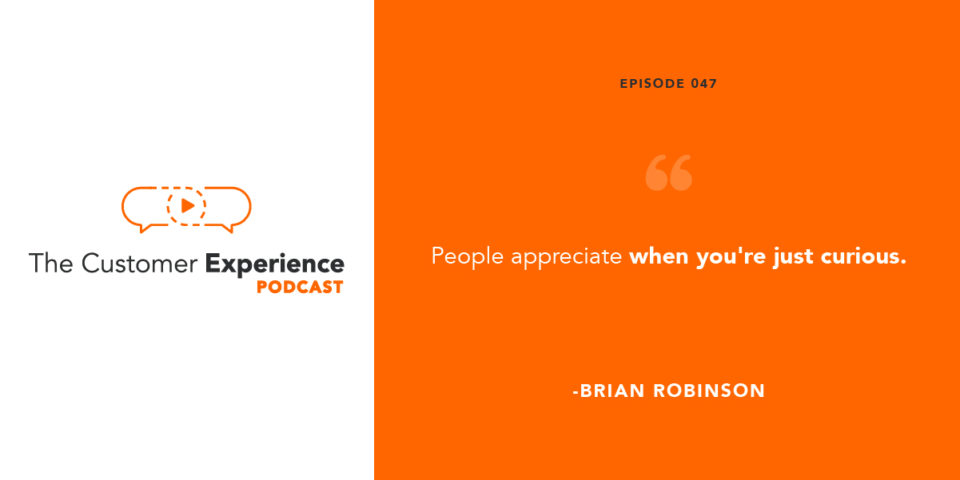
These prompts have proven successful for Brian in allowing the prospect to open up. They show pacing, and let the customer have some control over the conversation.
Asking Better Sales Questions
You’ll find that customers appreciate when they can see you’re honestly concerned about the root of their problems. Consider asking questions that uncover the other person’s motives – questions they don’t necessarily expect a sales rep to ask.
Oftentimes, it takes more than one probing question to find out the cause of your prospects’ concerns. An intentional conversation with clients requires you to investigate further. Because putting a temporary band-aid on the issue isn’t going to solve it.
Ask questions such as, “How would this affect the amount of time you spend with your family?” or “How will this improve your life?”
Brian advises asking these types of questions because, at the end of the day, that’s what people care about – their families and their free time. By asking better sales questions, you’re affecting the way the prospect thinks about the opportunity. It’s no longer just a transactional conversation.
Once you reach a more personal level in the conversation, you’re setting the stage for emotional decision-making.
“It’s truly an orientation towards helping another human being accomplish their goals and becoming all they are hoping to become,” Brian says. “We buy things because we want to get better at something or we want to improve our lives.”
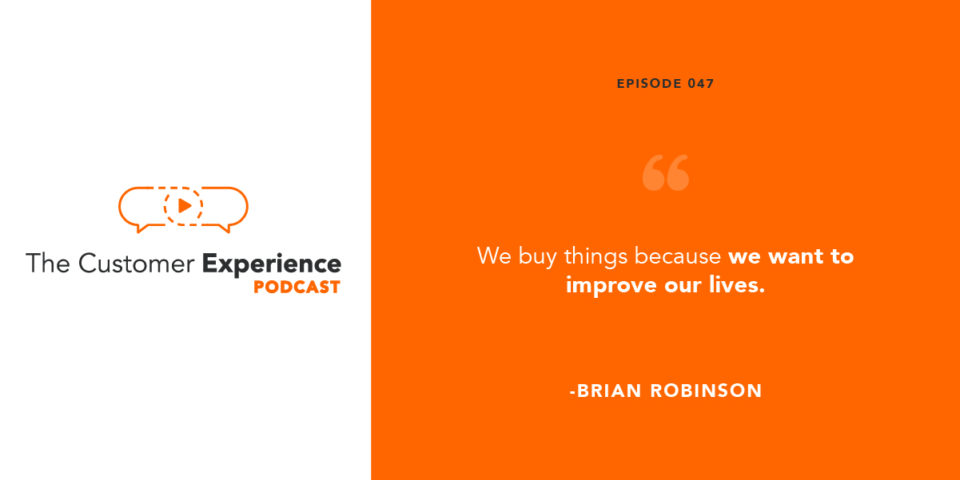
A good way to practice this is to write down three columns on a piece of paper:
1. Feature of the product
2. Each benefit related to that feature
3. Questions related to each individual benefit
Then, you can prepare to ask or answer questions throughout the duration of your sales touches.
The Five Steps to Selling for a Great Customer Experience
To help us understand his sales methodology, Brian shares his five steps to instant sales improvement and a quality customer experience in the video below…
The steps to “The Selling Formula” are:
1. Connect with the prospect and set the agenda, as mentioned above.
2. The interview (Q&A) – the step that really makes or breaks the entire approach.
3. Present the solution after the interview. The answers to your interview questions are critical to this step because you need to know what problems you are offering solutions to in the first place.
4. Provide your pricing and guarantees.
5. Close the deal.
Doing those steps, in that order, will help you improve customer experience and increase your likelihood of success in making the sale.
Step two is especially crucial. If you prioritize asking the right questions at the right time, it will dramatically impact the outcome of the sale.
Brian challenges others to really enter the mind of their prospects. Piquing their curiosity should be at the forefront of your approach.
Why You Need A Sales and Marketing Feedback Loop
In order for “The Selling Formula” to work, there also needs to be an effective sales and marketing feedback loop in place for consistency in messaging with customers. This alignment is something we explore in depth in Episode 44 with Sangram Vajre, cofounder and Chief Evangelist at Terminus, coauthor of “ABM is B2B,” and host of the #FlipMyFunnel Podcast.
While working with Johnson & Johnson, Brian noticed a disconnect between the sales and marketing teams when it came to the talking points sales used in conversations with prospects. He explains this further in the clip below…
The marketing team likely believed that they were supplying the sales team with the best script in order to close deals. Unfortunately, it was much different out in the field where Brian and the rest of the sales team were working.
If there had been a more efficient feedback loop between marketing and sales, the talking points would have been iterated upon to become more effective, and it’s likely that more deals would have been closed. The learning curve for newly onboarded sales reps could have been reduced drastically, as well.
We need communication between the teams as to what is said in interactions with customers so that it is the same across the board. This will decrease the likelihood of confusion, increase sales success rates, and improve the overall customer experience.
But from this experience he was able to refine his own practices. He actually welcomes struggles like these.
“The greatest growth experienced is in embracing struggle,” he says. “Struggle is the most important thing we can experience to go to the next level, but we’re not willing because of the desire for comfort. Let it do its work. You’ll see how quickly you can grow if you allow yourself that experience.”
This post is based on an interview with Brian Robinson, author of “The Selling Formula,” and VP of Strategic Partnerships at Works24.
See the video below to hear about why he considers BombBomb his best customer experience (thanks again, Brian!) …
Get More From The Customer Experience Podcast
Listen to episodes like this one right now:
- “How to Avoid Branding and Marketing Mistakes While Driving Fast” with Dave Knox (strategic advisor at Predicting the Turn, podcast host of Predicting the Turn, and author of Predicting the Turn)
- “4 Things Every Customer Wishes You Understood About Them” with Mike Redbord (General Manager of the Service Hub at HubSpot)
- “The Financial Side of CX: Which Customers Should You Invest In” with Sarah Toms (cofounder and Executive Director of Wharton Interactive and coauthor of The Customer Centricity Playbook)
Hear from our upcoming guests, including:
- Scott Barker, Head of Partnerships at Sales Hacker and Sales Engagement Evangelist at Outreach
- William Ammerman, author of “The Invisible Brand” and EVP of Digital Media at Engaged Media
- Joe Caprio, VP of Sales at Chorus
Where to subscribe, rate, and review this podcast:
Ask Sales Questions in a Better Way … Face to Face in Video!
An warm, personal, and effective way to ask better sales questions when interacting with customers and future customers is to use video. They are able to see, hear, and feel that you actually care about their responses, and are actively working to find them solutions with your product or services.
This authenticity is hard to translate with plain text, as it may just come across as a sales pitch. But with one-to-one video emails, you are able to show your prospects that you are willing to take the time to record a message for them and take all their thoughts into account.
“Rehumanize Your Business” is a great resource to get you started with integrating video in your business. The book is an Amazon #1 bestseller in Business Sales, Business Communication, and Customer Relations, the Porchlight Books #1 bestseller in its opening month of release, and a Barnes & Noble bestseller in its opening week of release.
Learn more about Rehumanize by clicking right here to see if this book is just the tool you need for your business to thrive.

